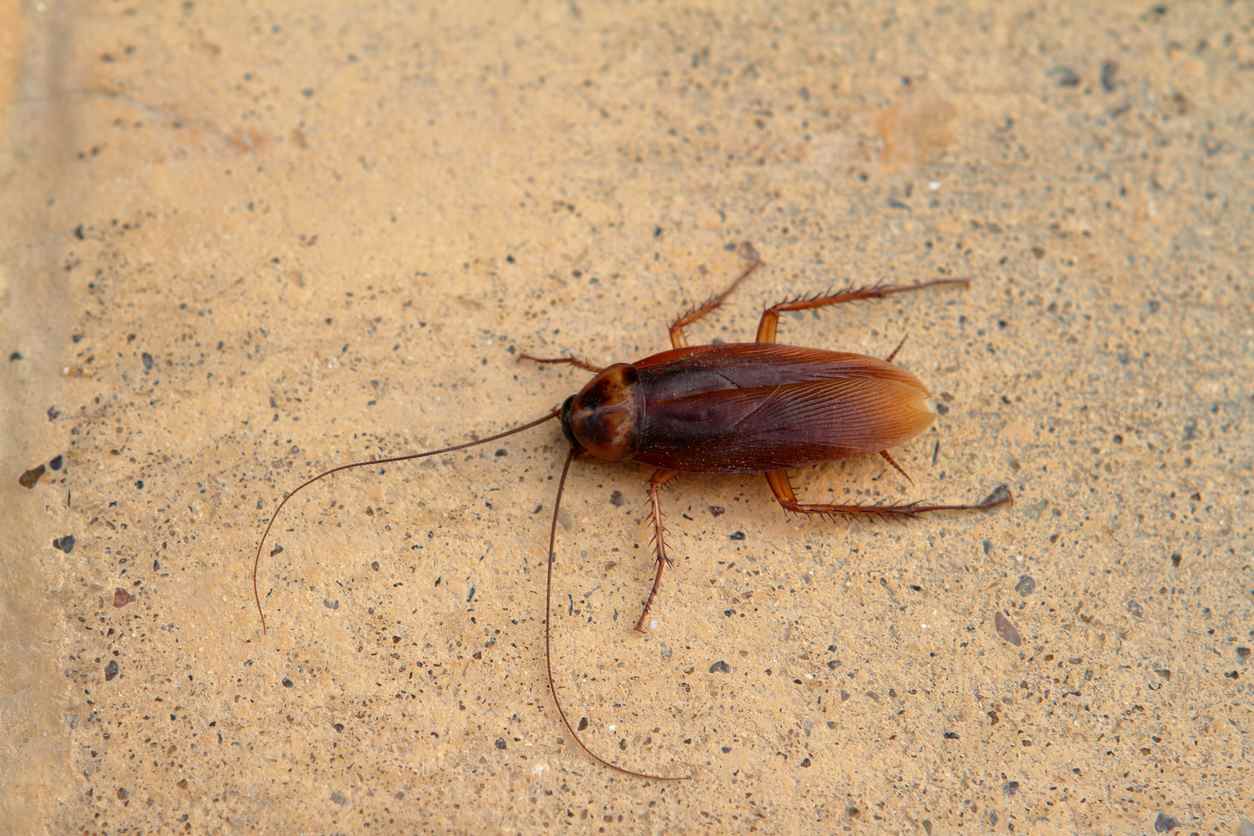
Have you ever seen an oriental cockroach? Would you know if you had? The oriental cockroach, Blatta orientalis, is not thought to have originated in Asia, despite its name. Instead, it arose in Africa, and it’s one of 55 species of roaches in the United States.
Oriental cockroaches like living in cool, damp places and look somewhat different from more common roaches. You may not even recognize these critters as roaches if you see them in and around your home, but you can be sure they can be as dirty and dangerous as other types.
What Is an Oriental Cockroach?
Oriental cockroaches are also known as waterbugs because they love damp areas. Some common areas include:
- Pots near water pipe leaks
- Under sinks
- In crawl spaces
- Damp basements
Another common nickname is the “black beetle cockroach” because their bodies are big and dark brown or black, unlike other types of cockroaches. Female oriental cockroaches have bodies about 1 inch long, with stubby wing pads over about a quarter of their bodies. Their bodies are also broader and heavier than the males’, which are a bit smaller. Males have wings covering about three-quarters of their bodies, but neither males nor females can fly.
Like other cockroach species, the oriental cockroach is guilty of spreading diseases such as salmonella and E. coli food poisoning. They can produce powerful allergens as well and may worsen asthma symptoms. While these pests typically don’t bite, they may if cornered. However, the bite is small and usually painless. Thorough cleaning of the area around the bite helps prevent infection.
Where To Find Oriental Cockroaches
Oriental cockroaches are found in North America, in both northern and southern regions. They’re especially prevalent in wet or damp areas, but can be found throughout the continent. These cockroaches thrive in areas with temperatures between 68 and 84 degrees. Temperatures below 45 degrees are too low for survival, while above 115 degrees is too hot. Use this to your advantage if you are trying to rid your space of oriental cockroaches, as you can either heat them or freeze them.
Outdoors, oriental cockroaches like mulch and flower beds where they can hide from the sun. They’re partial to garbage receptacles and the contents of emptied tin cans. They also live under leaves, beneath stone walls, and under cement slabs like foundations and patios. Oriental cockroaches like undisturbed damp spaces during the day, and at night they go marauding in your house, gaining access along water lines, service ducts, and sewer pipes. They’re somewhat unwary, sluggish insects that don’t tend to skitter like other cockroaches.
They seldom climb higher than the ground floor inside your house and won’t climb shrubs or trees. Large numbers of them may mass around leaks in basements and crawl spaces.
If you suspect you have an oriental cockroach infestation, there are a few clues:
- You see them outside in your yard in damp places or can watch them enter and leave your home via utility holes or gaps in windows and screens.
- You see their reddish or dark brown egg cases or capsules that are about 3/8 to 1/2 inches long. Each capsule holds about 16 eggs.
- You notice a notoriously musky cockroach odor. The roach smell comes from chemicals and feces secreted by the cockroach that can affect the flavor of foods.
Although they largely prefer being outdoors except when feeding, they’re driven indoors at night to seek food. They also will infest homes during droughts.
What Attracts Oriental Cockroaches?
Sewage and Garbage
Like all cockroaches, oriental cockroaches are attracted to filth. They will eat sewage, garbage, and other organic matter. Oriental cockroaches then enter the house and track everything they’ve walked through into your home on food preparation surfaces, cupboards, pantries, and sinks. Unclosed, unsealed food containers are sought-after targets for a free meal, and they’re sure to leave their filthy footprint behind.
Food and Water
Although food is important to them, water is even more critical. Oriental cockroaches can live for over a month without food, but they won’t survive more than two weeks without water. This is why they’re attracted to wet or damp spaces like around toilets, under sinks, and other potential sources of leaks. Dripping outdoor faucets or leaky hoses are appealing destinations for them.
How To Get Rid of Oriental Cockroaches
As in so many things, prevention is the best defense against oriental cockroach infestations. Good sanitation practices, including keeping a spotless kitchen, will go a long way toward keeping them out of your home. Vacuuming frequently may also help, and running a dehumidifier to dry out damp places in your home can keep them at bay.
Outdoor Solutions To Prevent Oriental Cockroaches
Outdoor prevention includes sealing cracks, especially around doors, windows, pipes, and utility lines. Removing sources of water leaks and puddles may bolster your efforts to keep them from getting into your home.
You can also make hiding places less appealing to oriental cockroaches by venting crawl spaces to decrease their dampness. It would help if you also diverted rainwater from the house with gutters, downspouts, and cement splash blocks.
Indoor Solutions To Prevent Oriental Cockroaches
Inside, a pest control specialist will likely do a thorough inspection and what is known as a cockroach survey, which identifies the extent of a possible infestation and an idea of where the roaches are congregating. As a homeowner, you can accomplish this by putting sticky traps against walls and in corners.
Once it’s determined that you do have oriental cockroaches, modifications to your home such as caulking cabinets, under sinks, and around screens can help to prevent further entry while you and your pest control technicians treat the area.
Professional Oriental Cockroach Removal
Technicians may take two approaches to rid your house of oriental cockroaches:
- Chemical controls like dust powders that contain boric acid or diatomaceous earth have natural silica-producing bacteria. Children and pets should avoid contact with these chemicals.
- Baiting with sticky traps containing matter that attracts oriental cockroaches is a safe way to eliminate or control them.
Sprays and foggers that are available to homeowners are not just ineffective but can actually make the situation worse. When these products are used, they may disperse the oriental cockroach population so they’re harder to find and eradicate.
Because cockroaches won’t survive at temperatures below 45 degrees or above 115, a chemical-free and safe method of getting rid of oriental cockroaches may be to put objects with these insects in or on them in the freezer for a period of time. Putting them in the oven will work as well.
While these measures might sound hard and complicated, they will help you get rid of oriental cockroaches in your home or prevent them from entering in the first place. Learn more about finding, identifying, and exterminating these creepy crawlers at Cleggs Pest Control.

